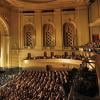
San Francisco Opera is celebrating its centennial during the 2022–2023 season. The company’s first performances were in 1922, a season of opera presented, of all places, at Stanford University. That season was a proof of concept, demonstrating the existence of an audience for what was even then an expensive art form. (That opera had been a presence in San Francisco since the mid-19th century is another story, covered in George Martin’s 1993 book Verdi at the Golden Gate and other sources.) The company’s first official season was 1923–1924, when the new company performed in the Civic (now Bill Graham) Auditorium.
Over the course of a century, a performing arts organization accumulates objects of all kinds, from photos, programs, and slides to stage models and business records to costumes and any number of more unusual objects. Until a few years ago, SF Opera didn’t have a formal archive or a professional archivist, but during David Gockley’s tenure as general director, he committed the company to both these things. SFO’s development of space in the Veterans Building, just across the courtyard from the War Memorial Opera House, included offices (and storage) for an archive and the budget for an archivist.
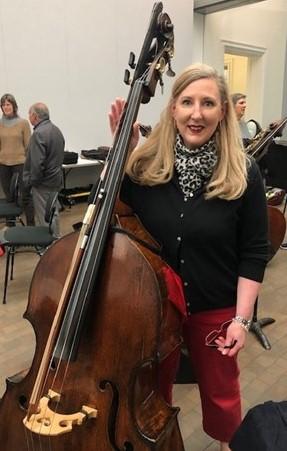
That’s where Barbara Rominski entered the scene. She’s been the company’s director of archives since February 2016. I chatted with Rominski about the Archive (formally the Edward Paul Braby San Francisco Opera Archive) and her work there on a sunny day in October. This was the day after SFO’s Community Open House, where she’d presided over a display of artifacts.
“Archives at performing arts organizations are started by people who are in the organization and are passionate about its history,” she told me. “Sometimes they come from the history and education side, like the late Robert Tuggle at the Met.” At San Francisco Opera, Jon Finck and the late Kori Lockhart were in the communications department and both had strong feelings about the value of an archive. Lockhart created SFO’s online performance database, which you can consult for details of every performance the company has given and often for a few photos of the performance’s production. The Archive’s reading room is dedicated to Lockhart, and there’s a plaque there with the dedication.
Rominski got her start in art history. She was working toward a graduate degree when she learned that “archivist” was a real profession, and shortly thereafter, she enrolled in the library science program at San José State University. Before joining SFO, she worked for the Achenbach Foundation for Graphic Arts, in various other positions, and finally for the San Francisco Museum of Modern Art. She was at SFMOMA for more than a decade, where she established the museum’s archive and hired staff. Finck, who was then SFO’s director of communications and public affairs, contacted Rominski for advice about archivists and, after discussions with her, realized that he had found his archivist.
When Rominski arrived, she started organizing the vast amount of material that the company had accumulated. She’s now working on multiple ongoing projects, including oral histories, special projects related to the centennial, cataloging slides and photos, and cataloging company records. She waves at a stack of white bankers’ boxes and stacks of blue archival boxes in the reading room. “They start in the bankers’ boxes, which aren’t archival; they’re scanned and cataloged and finally stored in these boxes, which are archival quality.”
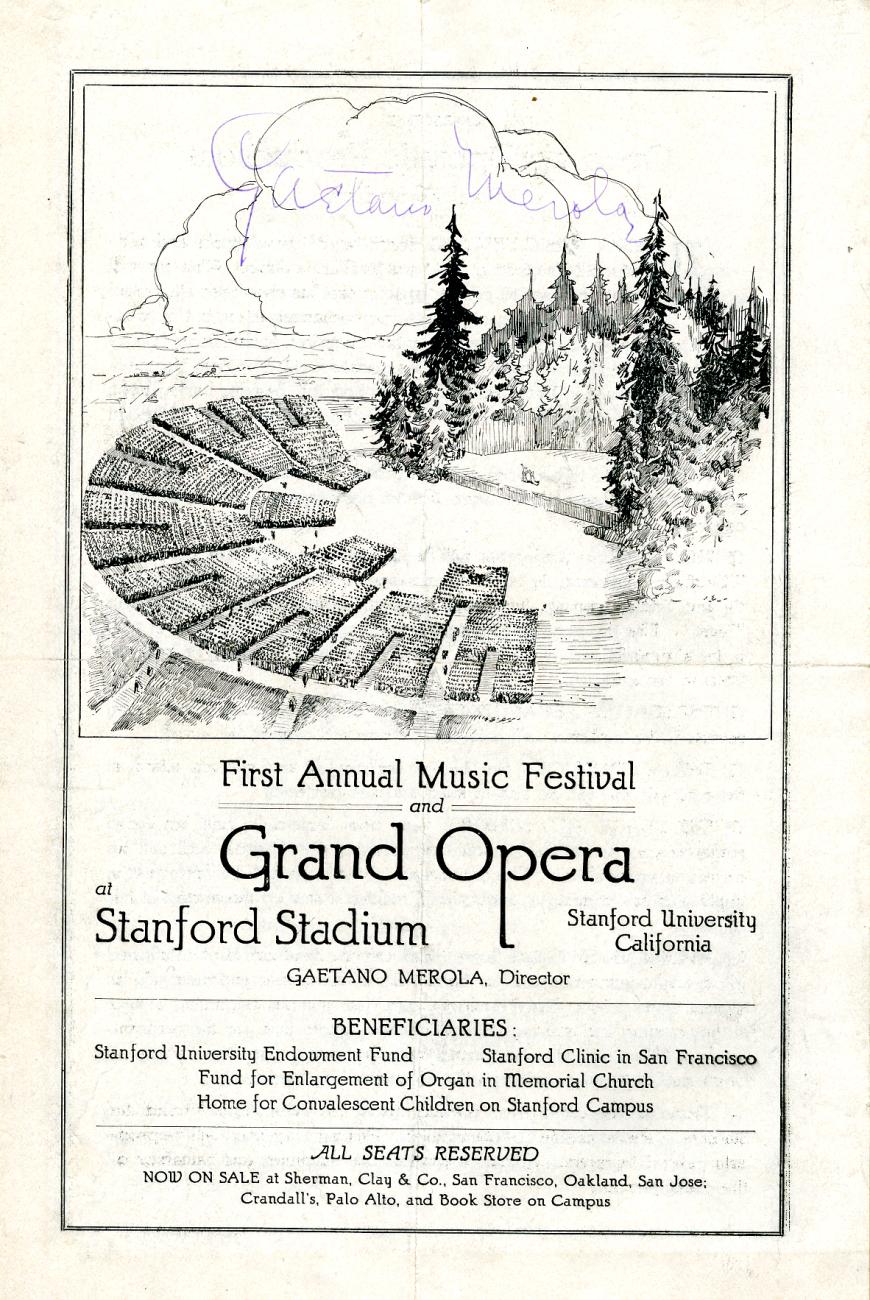
Rominski was able to work during the pandemic, returning to work early on. She’s the only person working in the Archive, and she lives walking distance from Civic Center, so there was little risk to her. Some of the work that underlies the Archive, such as mass scanning of slides and photos, requires specialized equipment that SFO doesn’t own. This work is done by outside contractors, and Rominski is glad that she was able to keep them employed during the pandemic.
Giant Quantities of Photos
SFO has staged hundreds of operas in the last century, and since the 1920s photographers have taken pictures of all of them. The company owns an enormous number of images, very likely in the range of 600,000 to 650,000.
But the company has few photos from the1920s, and this is a gap in the Archive that Rominski would love to fill. “One of the oldest items in the collection is from 1923. It’s a photograph of the company — including the instrumentalists, singers, administration, donors, and board — during the production of Andrea Chénier that year. We have only a few photos from the 1920s.”
She has a plea for SF Classical Voice readers: “If you or anyone you know might have photographs or other material related to San Francisco Opera from the 1920s, please get in touch at [email protected]. We’d love to talk with you about what you have.”
The company also has tens of thousands of video recordings. There are unreleased in-house archival recordings. Some productions were filmed for DVDs or TV broadcasts. Starting in 2007, the in-house OperaVision system has been used to provide intimate views of the stage from the balcony, where the sound is great — but so is the distance from the stage.
During the pandemic, OperaVision recordings were used for regular free streams. For the 2022–2023 season, you can purchase a livestream of the third performance of each opera and view it for 48 hours after the performance. All of these are archived as well, but in the media department rather than in the main Archive.
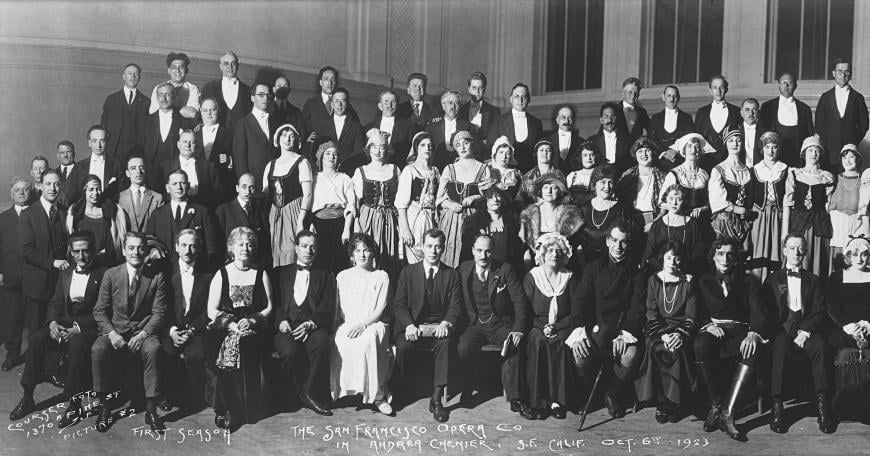
Streaming the First Century
For the centennial season, SFO has made a number of special efforts, and Rominski is involved with many of them. She’s the co-editor, with Public Relations Director Jeffery McMillan of Streaming the First Century, a section of the SFO website with all sorts of goodies reflecting the company’s history.
Streaming the First Century includes numerous archival recordings of past performances. SFO brought the operas of Leoš Janáček to the U.S. starting in the 1960s, and you can hear a superb 1980 Jenůfa with Elisabeth Söderström in the title role and Sena Jurinac as Kostelnička.
What about the Tosca performance that opened the War Memorial Opera House in 1932 and starred the legendary soprano Claudia Muzio? Act 1 was broadcast and a recording survives, the only known live recording of Muzio, whose contemporaries and successors spoke of her with awe. Streaming the First Century includes an excerpt from the act and also a discussion with producer and rerecording engineer Ward Marston about preserving old recordings. That performance also represents the company’s first simulcast: The radio broadcast went to the Civic Auditorium and the area behind City Hall.
The performance recordings at Streaming the First Century are divided into sections for Slavic, French, Italian, and German repertory, reflecting the wide range of works that SFO has performed over time. But that’s not all that you can hear!
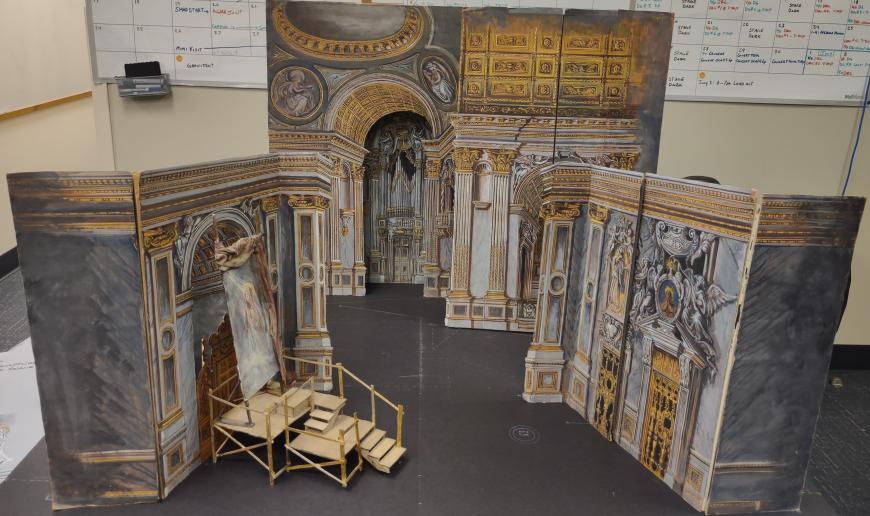
In 2009, Ann Farris started conducting a series of informal short conversations, called Memories, that focus on a specific point of SFO history that the interviewee was involved in. In 2016, Rominski started an oral history project in partnership with the Oral History Center at the University of California, Berkeley. These are formal oral life histories that run from six to 15 hours. They’ve interviewed several people important to the company, with more to come.
Rominski has been closely involved with this because of the exacting requirements of conducting such interviews: Portions of some of the histories are embargoed and can’t be made public at this time, and sometimes sensitive material has to be removed. Excerpts from these interviews have been posted to Streaming the First Century, on a page charmingly called Down the Rabbit Hole.
On that page, you can listen to or read interviews with commentators, singers, directors, administrators, and more. General Director Emeritus David Gockley, director Francesca Zambello, and former Chorus Director Ian Robertson are all there. Jeanna Parham, the company’s head of hair, wigs, and makeup, chats with Stan Dufford, who held the same position from 1956 to 1968. There’s an interview with Tom Munn, the company’s lighting director from 1976 to 2001, who died earlier this year. Streaming the First Century is expected to remain on the company’s website indefinitely, and there’s hope that more material will be added in the future.
Favorites and Other Objects
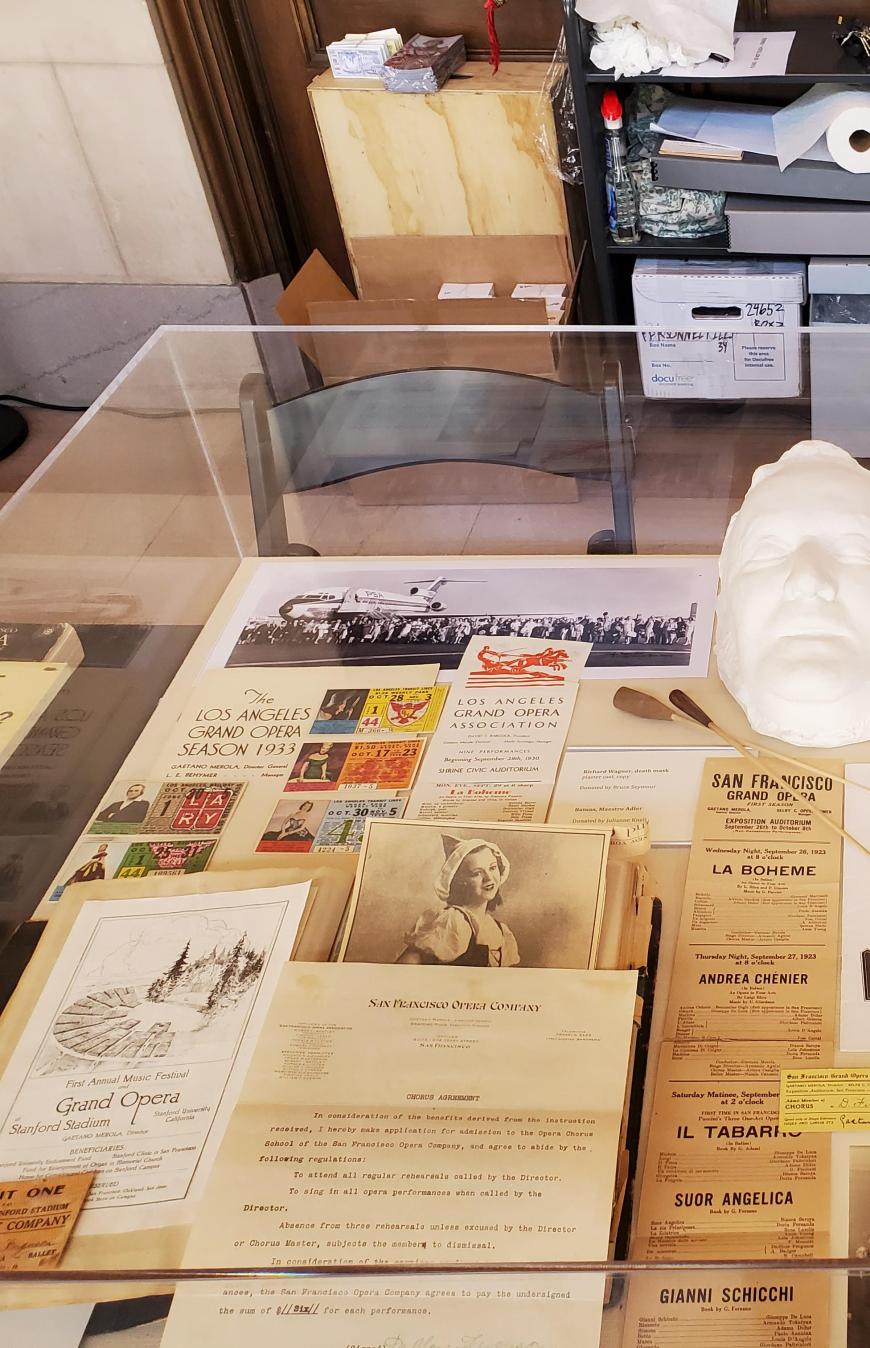
The SFO Archive contains a wide variety of objects, expected and unexpected. There are programs, of course, including a complete run from 1932 to 1969. That’s because one man, Jerome Friedman, was responsible for producing and selling programs during those years. (Yes, you had to buy your program back then.) There are more than 750 of these programs, which were donated by Friedman’s son Richard.
There are set models for many productions and costumes from some. There are sculptures, including two of the great mezzo-soprano Regina Resnik as the Countess in Queen of Spades and Klytemnestra in Elektra, made by her second husband and donated by her son.
There are some costumes, though they’re held in the costume department, which has the space and conservation knowledge. There’s a copy of a cookbook, with recipes donated by operatic personages, produced in 1974 by the San Francisco Opera Guild and Donna Casey, called What Aria Cooking? (Ouch.)
If you think that the cookbook is an odd item, the Archive also has a plaster cast of Richard Wagner’s death mask. The composer died in 1883 and had no personal connection to San Francisco or to SFO, but the Archive accepted this donation anyway. Most printed music at SFO is in the music library, but some unusual items are held in the Archive. One of these is an annotated working score of Wagner’s Parsifal, which once belonged to Armando Agnini, a relative of company founder Gaetano Merola who was a member of the music staff. This was donated by Seattle Opera, where Agnini also worked.
One object was donated by George Zimninsky, a former staff member. It’s an enormous hardbound scrapbook of press clippings from the 1925 and 1926 seasons, measuring 24 inches by 20 inches by 2 inches and probably assembled by an outside agency. He saw several of these scrapbooks in the company’s warehouse and rescued the one that was in the best condition. “He even said that he wished he had taken more,” said Rominski with a sigh. “And yet I’m grateful that these showed up.” He also donated some photos from the 1920s.
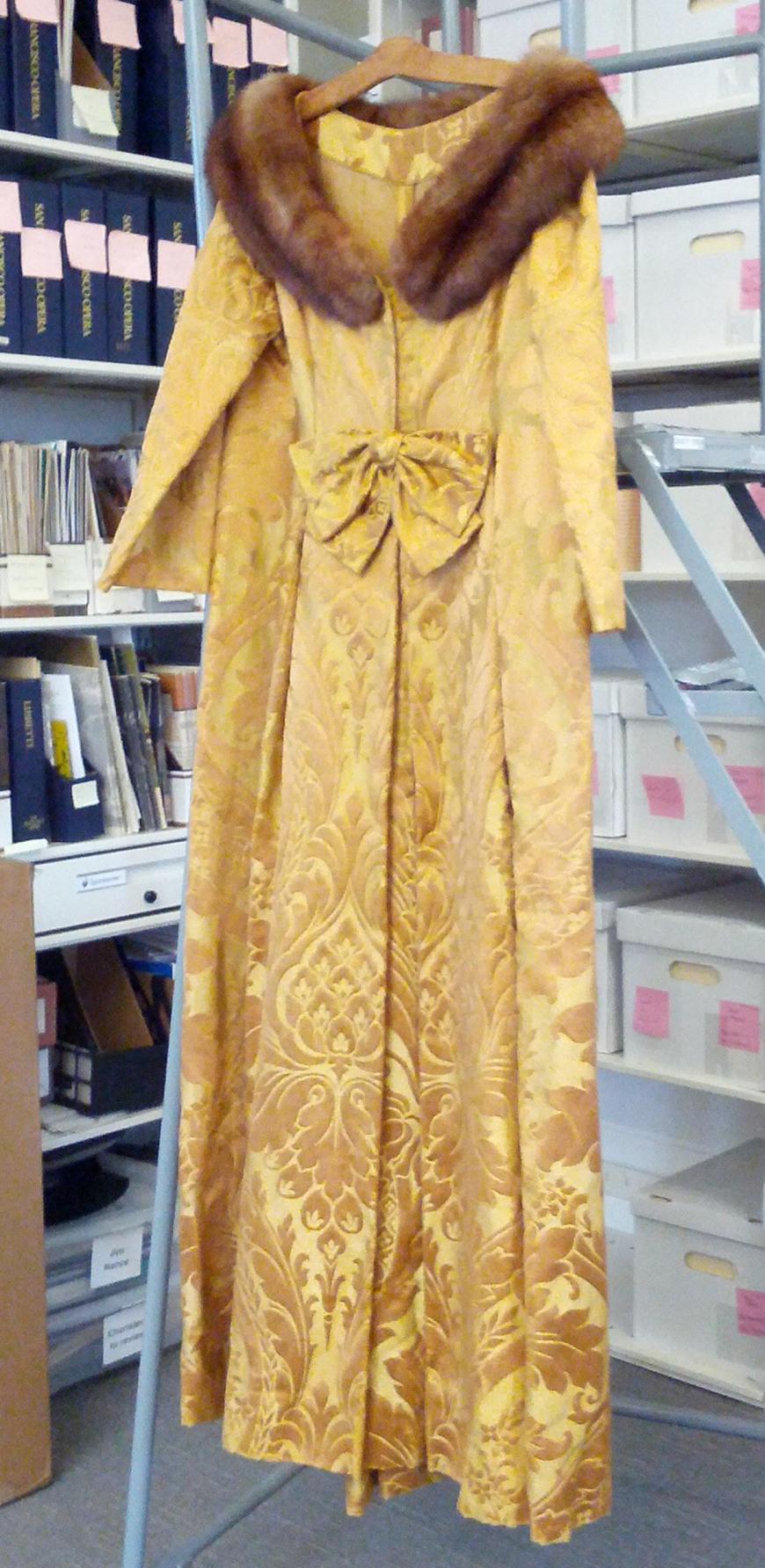
Rominski’s very favorite item is another scrapbook, but a much more personal one. It was kept by Laura Du Blois Ferguson Shephard, known as Du Blois Ferguson. She was an SFO Chorus member and sometimes sang small roles, as well as singing light opera roles with small companies around the Bay Area. She kept the scrapbook from 1919 to 1937.
It includes drawings she made; her 1924 chorus agreement with SFO, which paid her $6 per performance ($105 in 2022 dollars); a program from the 1922 Stanford season, signed by Merola; her backstage pass from that season; and more. The backstage pass is the oldest item in the SFO Archive. The scrapbook was donated by the Jeanne Gray Loughman family, who knew Du Blois as “Aunt Duby,” though they were not blood relations.
The two scrapbooks present some common conservation issues that archivists have to deal with. They aren’t made of acid-free paper, an archival standard. The items pasted into them aren’t printed on acid-free paper, and the glues aren’t archival quality. In these cases, says Rominski, there is little to be done other than keeping them in archival cases and climate-controlled storage.
Scrapbooks aren’t the only difficult items to conserve. Much audio material in the Archive has been recorded onto CDs, which are friable. The company’s reel-to-reel tapes are in good condition and don’t need immediate transfer to digital media. But audio from the 1970s and ’80s is on VHS tape and is considered to be at high risk.
One item in the collection presents unusual challenges. It’s a dressing gown that was made from the original War Memorial Opera House curtain. This curtain was in service from 1932 to 1969, and when it was replaced, pieces of it were sold and given away. Rose Goldstein, of Goldstein & Co., costume-maker to SF Opera before the company started its own costume shop, made a length of the curtain into a fur-trimmed dressing gown and gave it to soprano Mary Costa, who sang with SFO from 1959 to 1970. However, she rarely wore it, owing to its weight. Costa, 92, was happy to give the garment to the company.
Rominski sent it to an outside fabric conservator, who reported back that there wasn’t much that could be done for it. The fabric is stretched out because it hung in the dry opera house for 37 years, then hung in a closet for another 50. And fur is a magnet for insects. So the cloak will be kept in temperature-controlled storage, lying in a box, and brought out only for special occasions.
If you’re interested in the history of San Francisco Opera, you can visit the following exhibits:
Bringing the Opera to the People and the People to the Opera, San Francisco Public Library Main Branch, 100 Larkin Street, 4th Floor, through Jan. 12, 2023
San Francisco Opera: A Centennial Celebration, San Francisco International Airport, Harvey Milk Terminal 1, Departures Level 2, Gallery 1D, through Aug. 13, 2023




